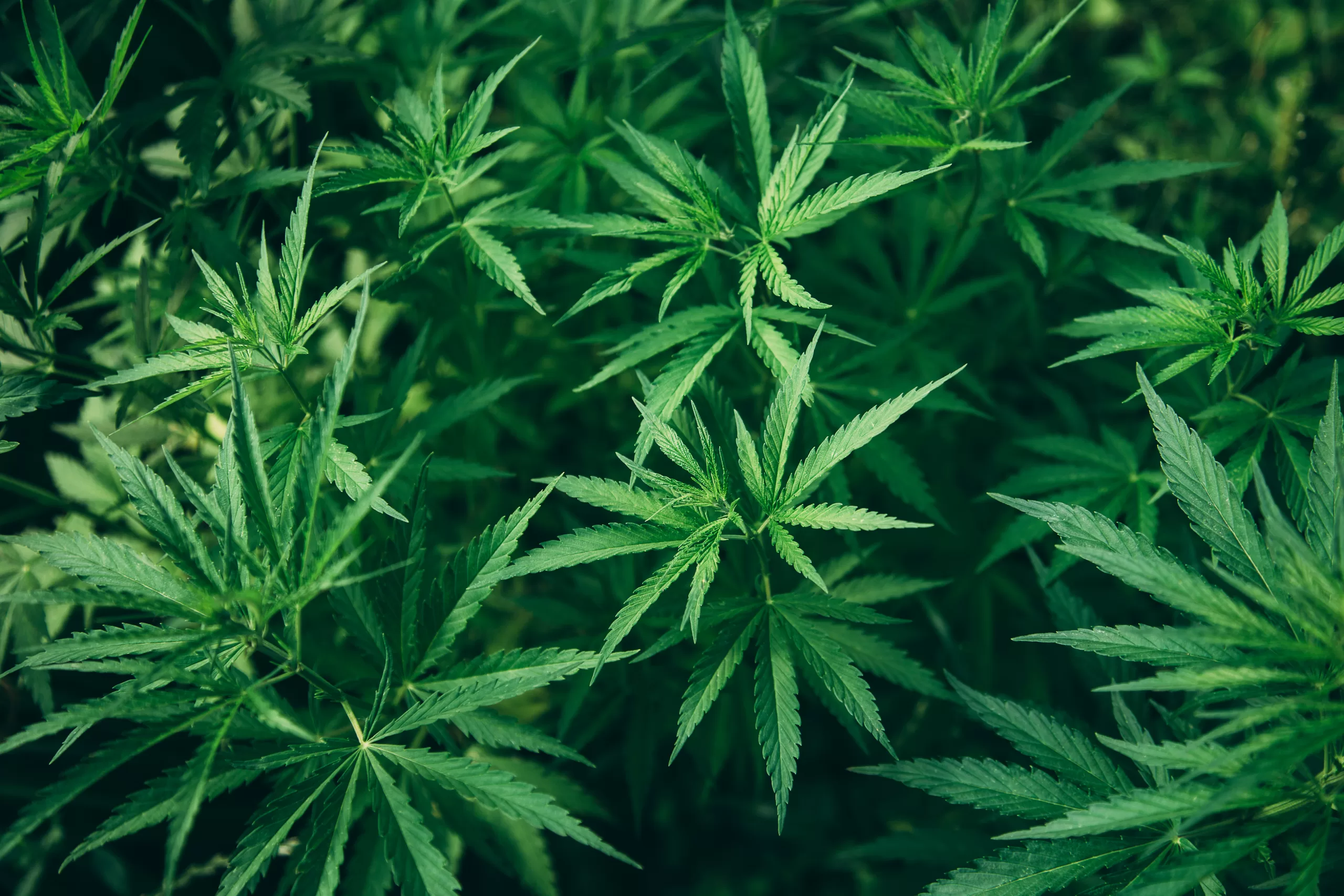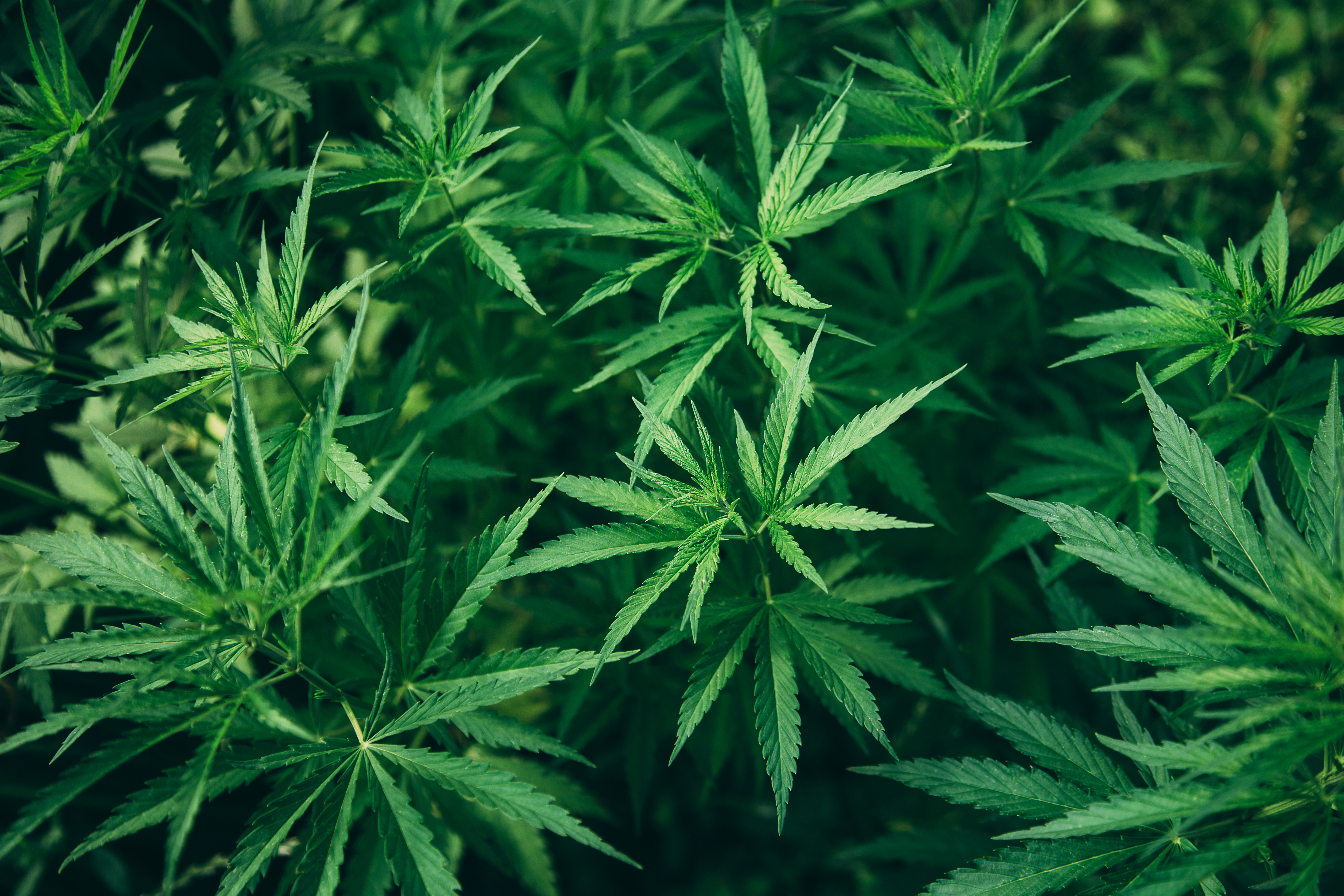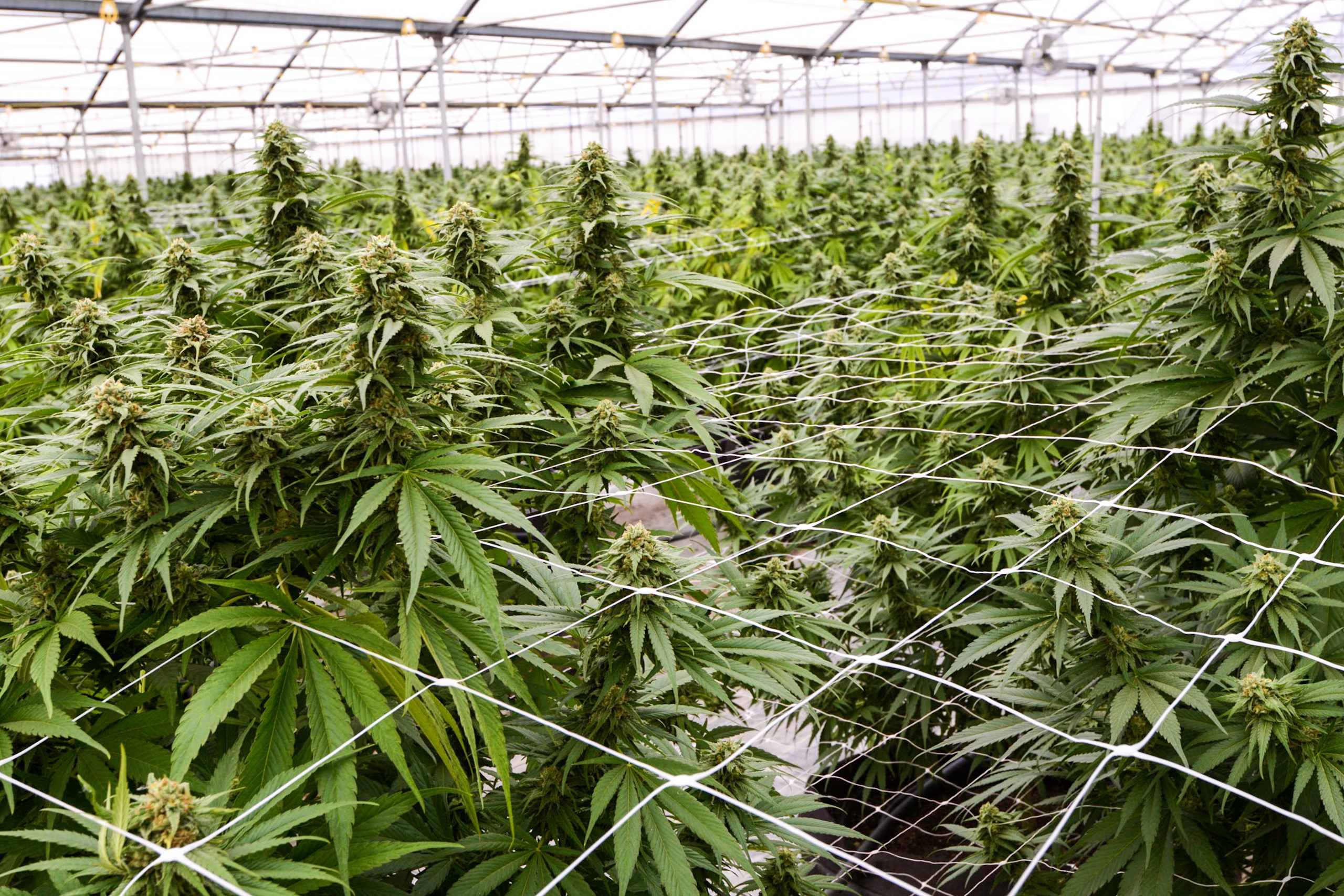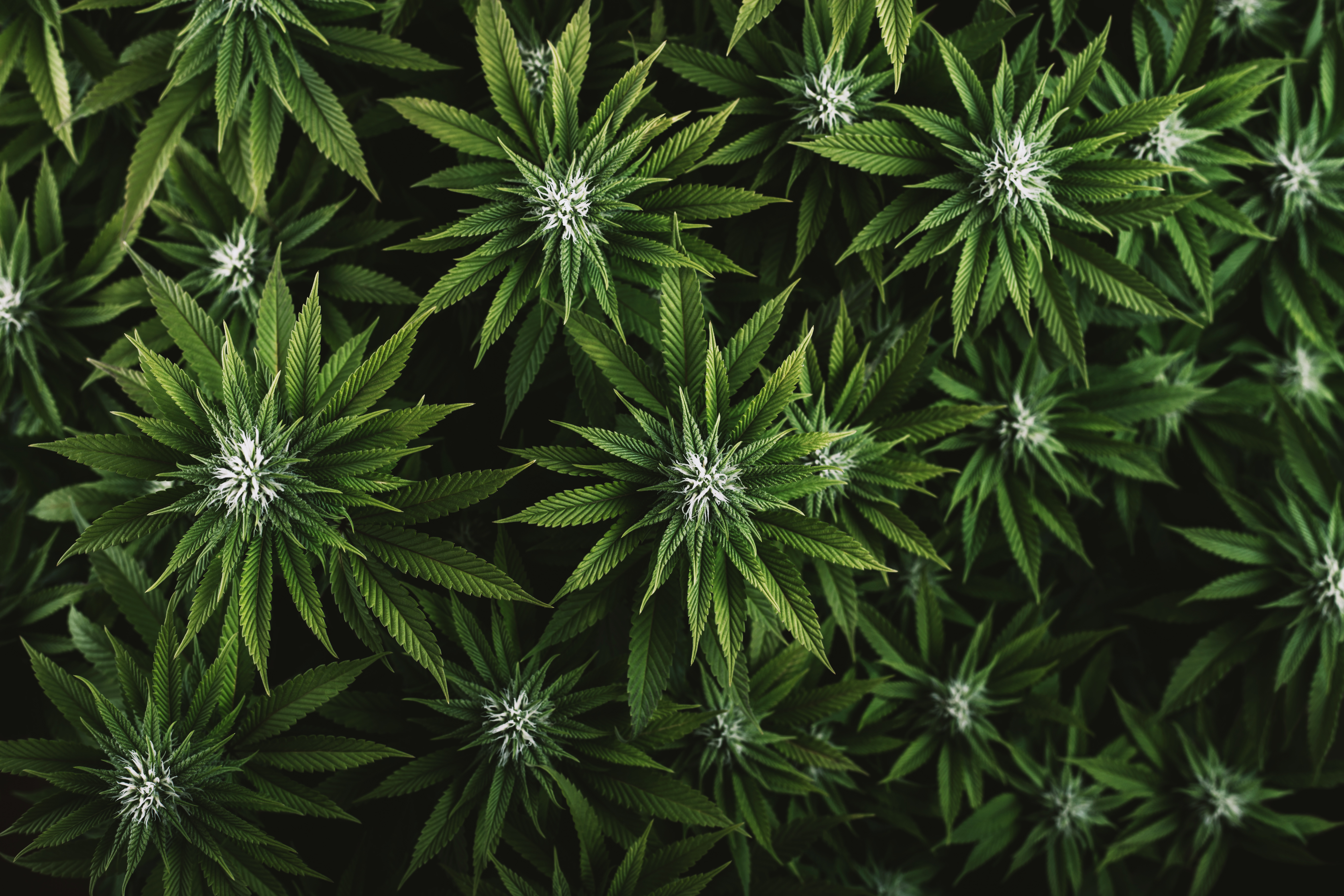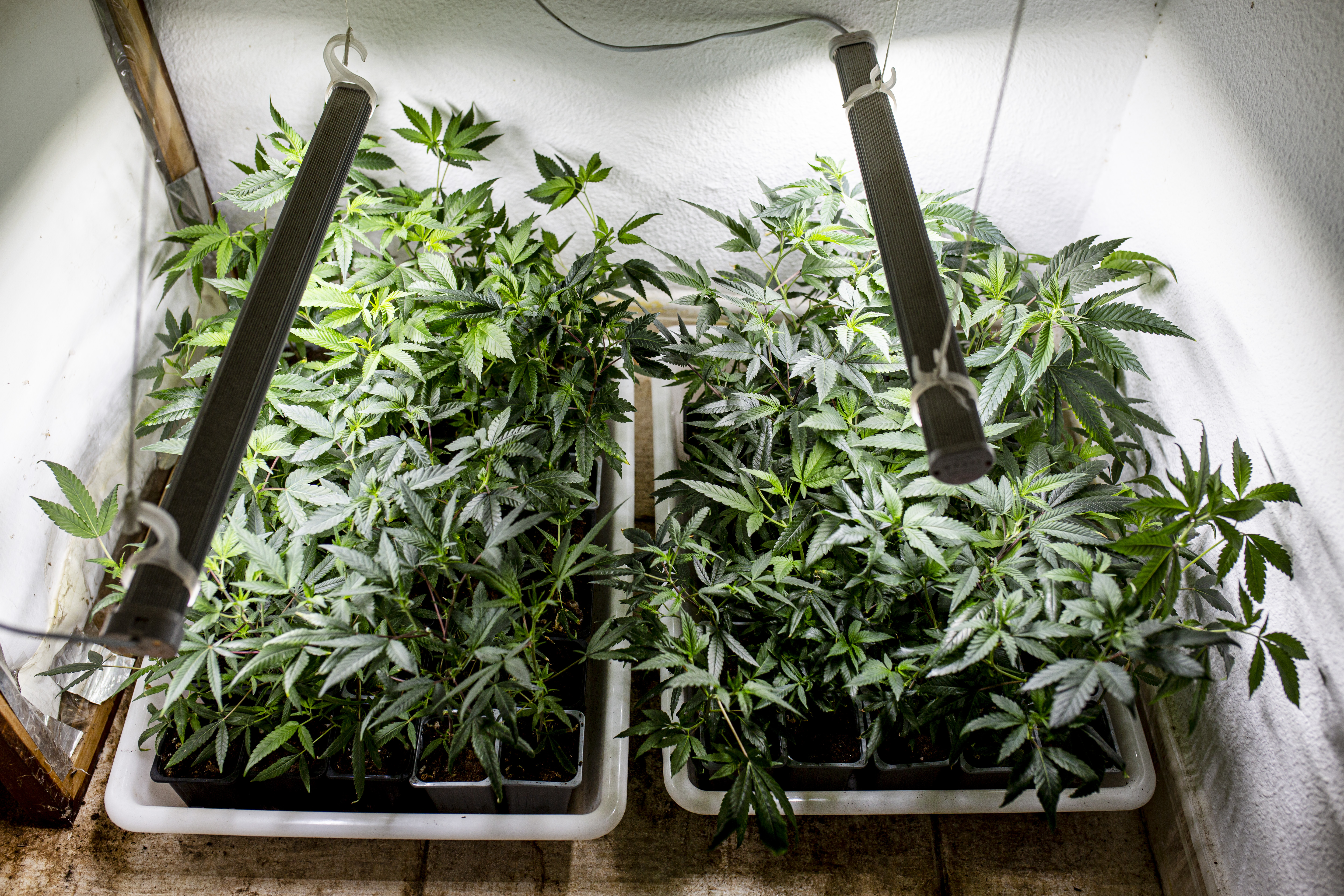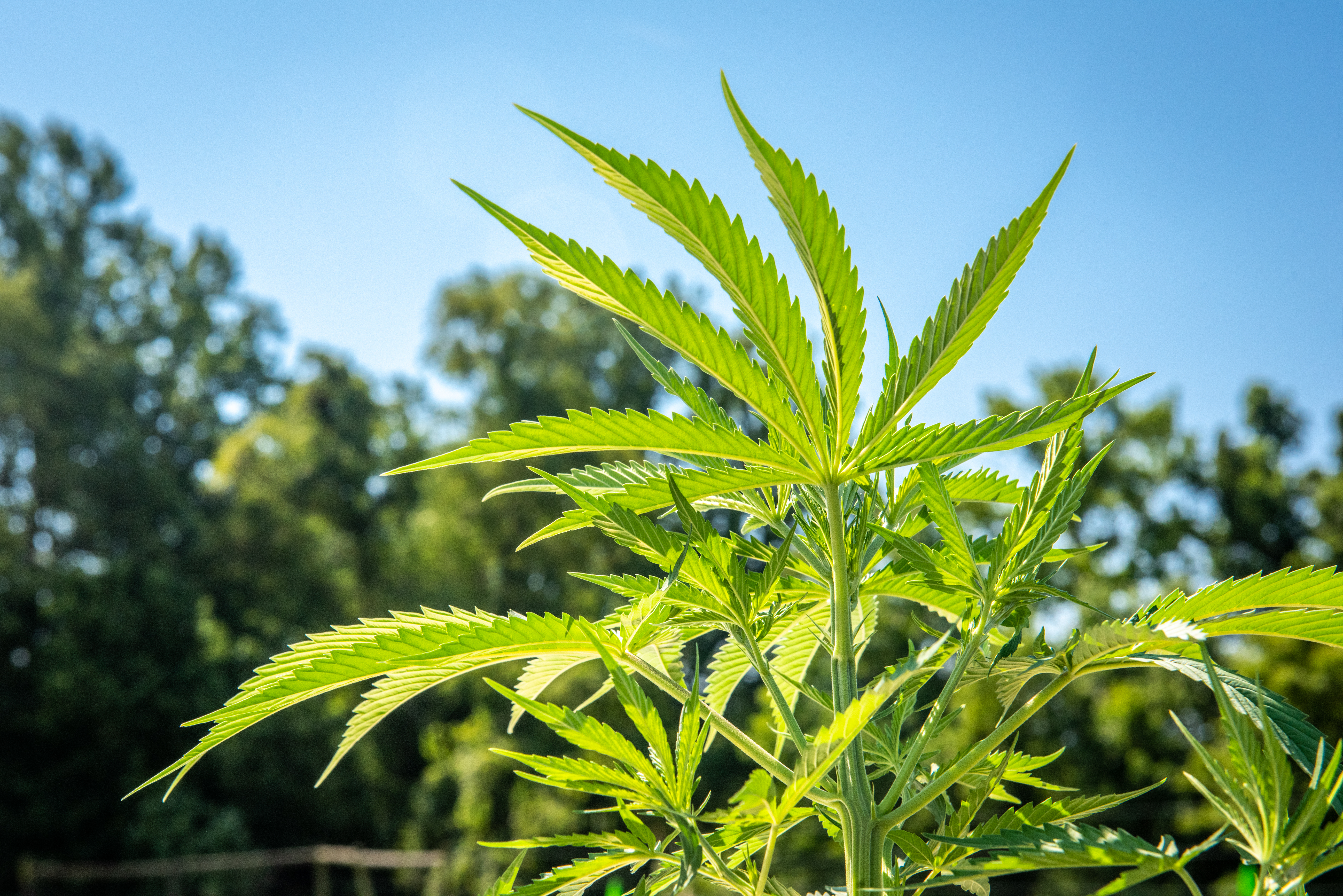Gardeners could find themselves in hot water with the cops if they’re not careful as these plants look and smell like marijuana.
Police in the UK seized 9,863 cannabis plants in the 12 months up to March 2023, according to the latest Home Office figures.
That’s equivalent to more than 27 plants every day.
Cops advise people to call 101 and report anyone suspected of growing cannabis.
Experts from Hemp specialists Secret Nature have listed out 12 varieties of plants for unsuspecting British gardeners to be aware of this summer, so as to avoid suspicion from nosey neighbours and members of the public, and how to tell them apart from cannabis plants.
What do cannabis and hemp plants look and smell like?
Tyler William, CEO of Secret Nature and cannabis plant expert reveals what gardeners should look for to correctly identify a feral cannabis plant.
He said: “Cannabis, or cannabis sativa plants are known for their long, slender stems with leaves attached at nodes.
“These large, palm-shaped, and compound leaves are divided into smaller leaflets that join at the petiole (leaf stalk), featuring serrated edges often compared to maple leaves.
“The leaves are darker green on the top side and lighter green underneath, covered in light hairs on both sides, giving a slightly fuzzy feel.
“Female cannabis plants produce chunky, dense buds protected by small leaves called sugar leaves.
“As the buds mature, long, hair-like pistils turn a deep burnt orange, usually during the seventh and eighth weeks of flowering.
“Mature buds appear as if dipped in translucent crystals due to resinous glandular trichomes.
“These buds often grow tightly together in clusters known as colas, which form at the top of the plant and along the branches.”
Cannabis plants have a very strong, distinctive smell, often described as skunky, earthy, or spicy.
This powerful aroma comes from the terpenes, aromatic compounds found in the resinous trichomes.
Different strains of cannabis can have varying scents, ranging from sweet and fruity to pungent and fuel-like, depending on their terpene profile.
Hemp plants share a similar aroma to cannabis but tend to have a much milder scent.
This is because hemp contains fewer terpenes and less THC.
The scent of hemp is often described as more earthy, grassy, or herbal compared to the strong, skunky smell of cannabis.
Tyler also said gardeners needed to be able to correctly identify a cannabis plant in case they suspected it was growing on their property.
However, there are a whole bunch of other garden plants that can look strikingly similar and even smell just like cannabis, so it’s important to know the differences.
12 plants that look or smell like cannabis
Cassava (Manihot esculenta)
Cassava, also known as yuca or manioc, is a woody shrub native to South America.
It is renowned for its starchy roots, which are a staple in various countries, especially in Brazil, where they are processed into flour, bread, and other food items.
Interestingly, cassava’s leaves bear a striking resemblance to those of the cannabis plant, leading to potential confusion for gardeners.
Cassava cannot grow outdoors in the UK due to the cool climate.
However, it can be grown indoors in a greenhouse where warmer temperatures can be maintained.
Similarities to cannabis:
- Leaf Appearance: Cassava leaves are a vibrant green, similar to cannabis leaves.
- Leaf Structure: Both plants feature leaves that grow from the stem and have a palmate shape. Cassava leaves typically have 7 leaflets, mirroring the structure found in many Indica cannabis plants.
Differences to spot:
- Leaf Division: While cannabis leaves are divided into separate leaflets, cassava leaves are lobed but remain a single, unified structure.
- Leaf Edges: Cassava leaves have smooth edges, contrasting with the jagged, serrated edges of cannabis leaves.
- Latex Exudation: Cassava plants exude a viscous, white latex when damaged, a characteristic not found in cannabis plants.
- Flowers: Both plants lack traditional flowers with petals, but cassava’s sepals are colourful and prominent, unlike the green-white, less noticeable sepals of cannabis.
Hemp Agrimony or Holy Rope (Eupatorium cannabinum)
Hemp Agrimony, also known as Eupatorium cannabinum or Holy Rope, is a member of the daisy family (Asteraceae).
Despite its name and the resemblance of its leaves to cannabis, it is entirely unrelated to marijuana or hemp.
This plant is known for its striking purplish-pink flowers that bloom, but it is the leaves that often cause confusion due to their similarity to Sativa cannabis plants.
Hemp Agrimony can grow outdoors in the UK, as it is well-suited to the temperate climate.
Similarities to cannabis:
- Leaf Appearance: The leaves of Hemp Agrimony are a rich green colour with pointed tips, closely resembling those of a Sativa cannabis plant.
- Leaf Spacing: The spacing and arrangement of the leaves on the stem are similar to that of cannabis, contributing to the visual confusion.
Differences to Spot:
- Family and Flowering: Unlike cannabis, Hemp Agrimony is part of the daisy family and produces noticeable purplish-pink flowers during bloom, which is a clear distinguishing feature.
- Leaf Structure: While the leaves may look similar in shape to cannabis, Hemp Agrimony leaves are less divided and have a more traditional leaf structure compared to the highly serrated and divided leaves of cannabis.
- Non-Psychotropic: Despite the species name cannabinum, Hemp Agrimony does not possess any psychotropic properties. The name simply refers to the shape of the leaves, not their function or chemical composition.
Chaste Tree (Vitex agnus-castus)
The Chaste Tree, also known as Vitex agnus-castus or monk’s pepper, is a flowering plant belonging to the Verbenaceae family.
Native to rocky Mediterranean regions, this plant has an interesting history of being used as an anaphrodisiac in ancient times.
While a fully mature Chaste Tree bears little resemblance to cannabis, its immature stages can cause confusion due to the similarity in leaf appearance.
Chaste Tree can grow outdoors in the UK, especially in warmer, sheltered areas or with some winter protection.
Similarities to cannabis:
- Leaf Structure: During its immature growth phase, the Chaste Tree produces leaves with a palmate arrangement, typically consisting of five to six leaflets, much like cannabis or hemp.
- Leaf Shape and Length: The leaves are serrated and grow to a similar length and shape as marijuana leaves.
Differences to spot:
- Leaf Margins: Although the leaves are serrated, the Chaste Tree’s leaf margins are smooth, unlike the distinctively toothed edges of cannabis leaves.
- Leaf Curl: Chaste Tree leaves tend to curl slightly under at the ends, a characteristic not found in cannabis leaves.
- Flowers and Berries: The Chaste Tree produces large clusters of light purple flowers and berries, which are significantly more conspicuous than the subtle buds of cannabis plants.
- Mature Appearance: As the Chaste Tree matures, its overall structure and appearance diverge significantly from that of cannabis, making it easier to distinguish.
Texas Star Hibiscus (Hibiscus coccineus)
The Texas Star Hibiscus, also known as the scarlet rosemallow, is a striking ornamental plant native to the Americas.
While its mature form features vibrant red and white flowers, during its growing phase, the plant’s leaves bear a striking resemblance to those of cannabis, causing potential confusion for gardeners.
Texas Star Hibiscus can grow in the UK but typically requires indoor cultivation or a greenhouse to thrive due to the cooler climate.
Similarities to cannabis:
- Leaf Appearance: The leaves of the Texas Star Hibiscus are bright green and textured similarly to marijuana leaves, with serrated edges that enhance the resemblance.
- Stem Structure: Both the Texas Star Hibiscus and cannabis plants have long, slender stems, adding to the visual similarity during the growing phase.
Differences to spot:
- Stem Texture: One of the key distinguishing features is the texture of the stem. The Texas Star Hibiscus has a woody stem, whereas cannabis stems are typically green and softer.
- Leaf Droopiness: The leaves of the Texas Star Hibiscus tend to droop more compared to the more rigid leaves of cannabis plants.
- Flowering: Come summer, the Texas Star Hibiscus produces conspicuous crimson or white flowers, which are a clear distinguishing characteristic from the less showy buds of cannabis.
Japanese Maple (Acer palmatum)
The Japanese Maple, known scientifically as Acer palmatum, is a popular ornamental tree originating from Asia.
While this tree is famous for its stunning foliage, certain varieties can closely resemble cannabis, especially during their early growth stages.
Japanese Maple can grow outdoors in the UK, as it is well-suited to the temperate climate.
Similarities to cannabis:
- Leaf Appearance: Japanese Maple leaves can look very similar to cannabis leaves, particularly when they are young. The leaves are green, have a palmate structure with typically 7 points, and have a toothed or serrated margin, which can easily mislead observers.
- Stem Structure: In its sapling stage, the Japanese Maple has a slender and bendy stem that, combined with its leaf shape and colour, enhances the resemblance to Cannabis sativa.
Differences to Spot:
- Colour Changes: Unlike cannabis, the Japanese Maple leaves change colour as the seasons progress. In late spring and summer, the leaves usually turn shades of red, pink, and purple, which is a significant visual cue.
- Stem Texture: After the first growing season, the stem of the Japanese Maple thickens and becomes woody, developing into a proper tree trunk, unlike the consistently green and soft stems of cannabis plants.
- Leaf Texture: Japanese Maple leaves are hairless (glabrous), whereas cannabis leaves are typically covered with fine hairs, providing a tactile way to differentiate between the two plants.
Spider Flower (Cleome hassleriana)
The Spider Flower, also known as Cleome hassleriana, is a plant that is often mistaken for Indica-dominant cannabis plants due to its similar appearance, particularly during its early growth stages.
However, as it matures, the Spider Flower displays vibrant purple and white flowers that make it easily distinguishable from cannabis.
Spider Flower can grow outdoors in the UK during the summer months, as it prefers warmer temperatures.
It may need to be started indoors and transplanted outside after the last frost.
Similarities to cannabis:
- Leaf Structure: Spider Flower plants have wide leaflets that start smaller near the stem, similar to the structure of Indica-dominant cannabis leaves.
- Height: When grown outdoors, Spider Flower plants can reach up to five feet in height, which is a common trait among many cannabis strains.
- Leaf Margins: Both Spider Flower and cannabis plants have palmately compound leaves with toothed or serrated edges. The leaflets are attached separately at the base, enhancing their resemblance.
- Leaf Surface: The leaves of both plants are dotted with hairs.
Differences to spot:
- Flowering: One of the most noticeable differences is that Spider Flower plants produce masses of soft pink, purple, or white flowers, which cannabis plants do not.
- Leaf Odour: The glandular hairs on Spider Flower leaves and petioles emit a rank, musky, or skunky odour when crushed, which is distinct from the subtler scent of cannabis leaves. Cannabis buds, on the other hand, have a very strong skunky smell.
- Leaf Toothed Edge: The toothed edges of Spider Flower leaves are much less pronounced compared to the sharply serrated edges of cannabis leaves.
- Prickles: Spider Flower plants produce some prickles, whereas cannabis plants do not have any.
Coral Plant (Jatropha multifida)
The Coral Plant, also known as Jatropha multifida or coralbush, is a plant native to Mexico and the Caribbean.
Its leaves bear a striking resemblance to those of Sativa cannabis varieties, making it one of the plants most commonly mistaken for marijuana.
Coral Plant cannot grow outdoors in the UK due to its preference for tropical climates but can be grown indoors or in a greenhouse where warmer conditions can be maintained.
Similarities to cannabis:
- Leaf Appearance: The Coral Plant has long, slender leaflets that are palm-shaped, with leaves comprising seven to eleven lobes, similar to the number of leaflets found in Sativa cannabis varieties.
- Leaf Structure: The cut and shape of the leaves resemble those of marijuana, particularly from a distance.
Differences to Spot:
- Leaf Texture: Coral Plant leaves have a shiny sheen that cannabis leaves lack, which is a key distinguishing feature upon closer inspection.
- Leaf Division: Unlike cannabis leaves that are divided into separate leaflets, Coral Plant leaves are lobed but not divided.
- Flowers: The Coral Plant produces clusters of bright pink flowers, which are quite different from the more muted green and purple-toned buds of Cannabis sativa.
- Odour: Coral Plant emits an unpleasant scent similar to cat urine, whereas cannabis does not have this specific odour.
- Latex Exudation: When damaged, the Coral Plant exudes a viscous white substance, while cannabis does not.
Kenaf (Hibiscus cannabinus)
Kenaf, scientifically known as Hibiscus cannabinus, is a plant that closely resembles cannabis, especially during its early growth stages.
Native to Southern Asia and Africa, kenaf is primarily cultivated for its fibre.
Its botanical name, which includes “cannabinus,” highlights its visual similarity to cannabis.
Kenaf can grow outdoors in the UK during the summer months but may need to be started indoors and transplanted outside after the last frost to ensure adequate growth.
Similarities to Cannabis:
- Leaf Structure: Kenaf leaves have a distinct star pattern, with a texture and vein lines similar to those of cannabis leaves. The leaves grow in bunches of six or seven from the stem, mimicking the arrangement found in cannabis plants.
- Palmate Leaves: Both plants produce palmate-style leaves with serrated edges, enhancing their resemblance.
Differences to Spot:
- Leaf Division: While cannabis leaves are divided into separate leaflets, kenaf leaves are lobed. This structural difference becomes more apparent upon closer inspection.
- Flowering: As kenaf matures, it produces yellow or scarlet flowers with sepals, petals, stamens, and carpels, which are significantly different from the more muted buds of cannabis.
- Leaf Position and Shape: The leaves lower on the kenaf plant are heart-shaped, whereas those higher up have a palm/star-like appearance. In contrast, cannabis leaves maintain a consistent shape regardless of their position on the plant.
- Mature Characteristics: Once mature, kenaf’s floral displays make it easier to distinguish from cannabis, as cannabis plants do not produce such vibrant flowers.
Okra (Abelmoschus esculentus)
Okra, known scientifically as Abelmoschus esculentus, is a widely prized vegetable for its edible green seed pods and its use in traditional medicine.
Native to tropical Asia and Africa, okra is now commonly cultivated in tropical and subtropical regions worldwide.
Its resemblance to cannabis has even led to notable incidents of mistaken identity by law enforcement.
Okra can grow in the UK but typically requires indoor cultivation or a greenhouse to thrive due to the cooler climate.
Similarities to cannabis:
- Leaf Structure: Both okra and cannabis have broad, green, palmate-style leaves, making them look similar from a distance.
- Height: Both plants can grow to a similar height, which can add to the visual confusion.
- Bud-like Growth: Okra produces buds near the stem that can look like cannabis nugs, adding to the similarity.
Differences to Spot:
- Flowers: Okra plants produce large, conspicuous white or yellow flowers, whereas cannabis plants have smaller green or purple buds and flowers.
- Leaf Lobes: Cannabis leaves can have up to eleven leaflets, while okra leaves typically have a maximum of seven lobes.
- Pods: Mature okra plants develop large green pods, which are a distinctive feature not found in cannabis plants.
- Leaf Width: Okra leaves are often wider than marijuana leaves, providing another point of differentiation.
Southern Marigold (Tagetes minuta)
The Southern Marigold, also known as Muster-John-Henry, is a versatile plant native to Central America.
It is valued for its culinary and medicinal uses, although it can often be considered a weed due to its rapid growth in cultivated or disturbed lands.
Despite its benefits, its resemblance to cannabis can cause confusion.
Southern Marigold can grow outdoors in the UK during the warmer months, as it is well-suited to the temperate climate.
Similarities to Cannabis:
- Leaf Appearance: Southern Marigold has long, serrated, sharp-edged leaves that can look remarkably similar to those of cannabis.
- Size and Height: The plant grows to a similar size and height as cannabis, enhancing the visual similarity, especially when it is still a seedling.
Differences to Spot:
- Flowering: Southern Marigold produces small yellow flowers, which are distinctly different from the green and purple buds of cannabis plants.
- Leaf Structure: Unlike cannabis, which has compound leaves composed of multiple leaflets, each leaf of the Southern Marigold is attached separately to the stem.
- Growth Environment: Southern Marigold often grows in disturbed or cultivated lands and can spread easily, which might be a clue in identifying it, especially in less controlled environments like abandoned lots and near crops.
Sulphur cinquefoil (Potentilla recta)
Sulphur Cinquefoil, known scientifically as Potentilla recta, is a plant that can grow between 1 to 2 ½ feet tall and typically features one or many stems emerging from the crown.
Its compound leaves can bear a resemblance to those of cannabis, especially before the plant flowers.
Sulphur Cinquefoil can grow outdoors in the UK, as it is well-suited to the temperate climate.
Similarities to Cannabis:
- Leaf Shape: The compound leaves of Sulphur Cinquefoil are similarly shaped to those of marijuana, which can lead to confusion, particularly before the plant flowers.
- Height: The plant’s height, ranging from 1 to 2 ½ feet, is comparable to the early growth stages of cannabis plants.
Differences to Spot:
- Flowering: Sulphur Cinquefoil produces yellow flowers with five petals, which cannabis does not. These flowers are a key distinguishing feature once the plant begins to bloom.
- Stems: The stems of Sulphur Cinquefoil have few, if any, branches, whereas cannabis plants typically have more branched stems.
- Leaf Details: While the leaves are similarly shaped, a closer inspection will reveal that Sulphur Cinquefoil leaves tend to have more pointed lobes and a slightly different texture compared to cannabis leaves.
Caucasian Crosswort (Phuopsis stylosa)
Whilst not looking like the cannabis plant, the Caucasian Crosswort can give off a very pungent smell which can easily be confused with that of some cannabis species.
So much, that in 2017 one unlucky couple in Somerset were robbed by a drugs gang who thought the smell coming from their garden was a cannabis farm.
Despite the robbers discovering there was no cannabis present, the couple were robbed of cash and valuables and advised by the Police to remove the Caucasian Crosswort to avoid any future confusion or suspicion.
What to do if you find Cannabis or similar looking plants growing on your property?
Secret Nature’s Tyler William said: “if you find cannabis growing on your property and the local laws prohibit it, then simply and without fuss, dispose of it.
“The growth of wild or feral cannabis is not uncommon in the UK, it is also not widespread and is a relatively rare occurrence but it can happen as simply as someone discarding or throwing some seeds.”
Tyler added: “If you’ve identified one of the 12 plants we’ve listed growing in your garden then it is up to you how to proceed.
“However, common sense might suggest taking steps to limit any confusion from prying eyes, or noses.”
